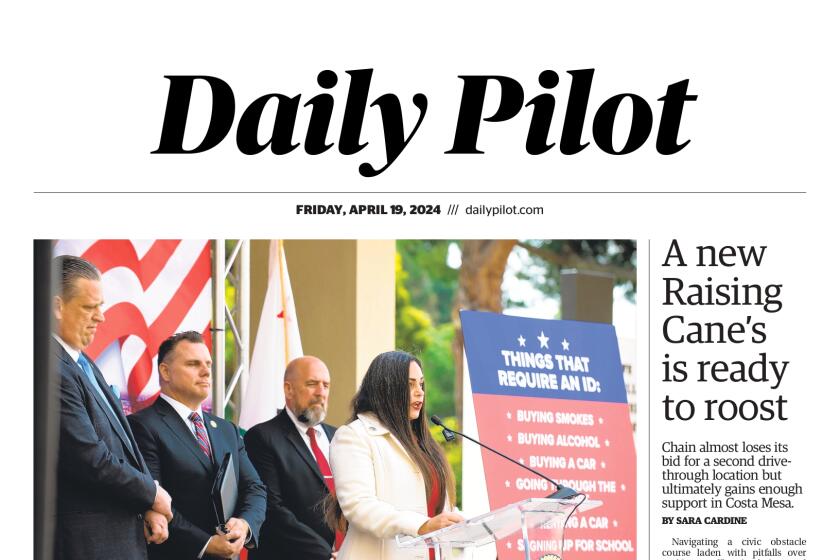Newport Harbor tour offers preview of dredging projects and more
Dredging is a perpetual job, at least when the funding exists.
In 2013, Newport Beach dredged about 600,000 cubic yards of silt from portions of its harbor at a cost of about $7 million. Now the city has about 1 million cubic yards of unwanted sediment in the parts of the harbor it didn’t reach five years ago, and it needs to persuade the federal government to commit $22 million to dig it out, according to Scott Cunningham, vice chairman of the city Harbor Commission.
Though the city doesn’t have the money now, it’s preparing to be shovel-ready, Cunningham said as he and other commissioners led a narrated tour of the harbor last weekend.
Several dozen people gathered Saturday aboard the ferry Commodore as the commission pointed out places where new policies and projects like dredging are being, or could soon be, implemented. Commissioners touched on highlights of the past two years, including paddleboard safety guidelines, potentially waiving the 5-knot speed limit for human- and wind-powered racing boats, the continued use of a secondary summer anchorage and the city’s 2017 takeover of mooring management and code enforcement from Orange County.
After passing under the Lido Bridge, they brought up the popular but illegal summertime bridge-jumping that this year included a man leaping onto the canopy of a passing electric boat, plus a group trying to break a record for consecutive bridge leaps, Commissioner Bill Kenney said.
The boat-crasher incident led to injuries to a passenger, criminal charges for the suspect and daily Lido Bridge patrols by lifeguards.
“It’s always been an issue, but it’s come to a head,” Kenney said.
The tour passengers applauded when commissioners reminded them of the water wheel trash-collecting vessel that will be placed in Upper Newport Bay now that the state has awarded Newport a $1.7-million grant for the project.
As for other material the city doesn’t want in its waters, recent staff preparations for the next big dredge have included sediment testing to identify what’s in the muck, which determines where it can be disposed. The city started testing early this year and has determined that of the 1 million cubic yards of material it wants out, about 200,000 are too contaminated for ocean disposal a few miles offshore.
Ideally, the next dredge will get the boating channels back to their intended depths of 10 to 20 feet. The most clogged areas have at least five feet of sediment to be removed.
“I’m going to call this Dredge 2.0,” Cunningham said.
Then it will be on to Dredge 3.0, or ongoing maintenance dredging, because big digs once every few years require big outlays.
Even a separate project to scoop the northern portion of the narrow Grand Canal cutting through Balboa Island has a $1.5-million budget. The work area — about 95 feet wide by 1,050 feet long and yielding about 7,300 cubic yards — is only a tiny fraction of what the main harbor dredge would be. But it hasn’t been dredged in about 20 years.
In other sand and sediment-moving developments, the commission is considering how to secure a blanket permit allowing the city to regularly push sand back onto shore that has been pulled off the harbor-facing beaches with the tides. Currently, that requires a separate permit by multiple federal and state agencies. The agency review period can take three to four months.
The sand that would be pushed back would replenish the pocket-size, calm-water beaches like those around Marina Park, Balboa Island and China Cove.
“It’s a bit like a snow blower,” Cunningham said.
Twitter: @Daily_PilotHD
All the latest on Orange County from Orange County.
Get our free TimesOC newsletter.
You may occasionally receive promotional content from the Daily Pilot.




